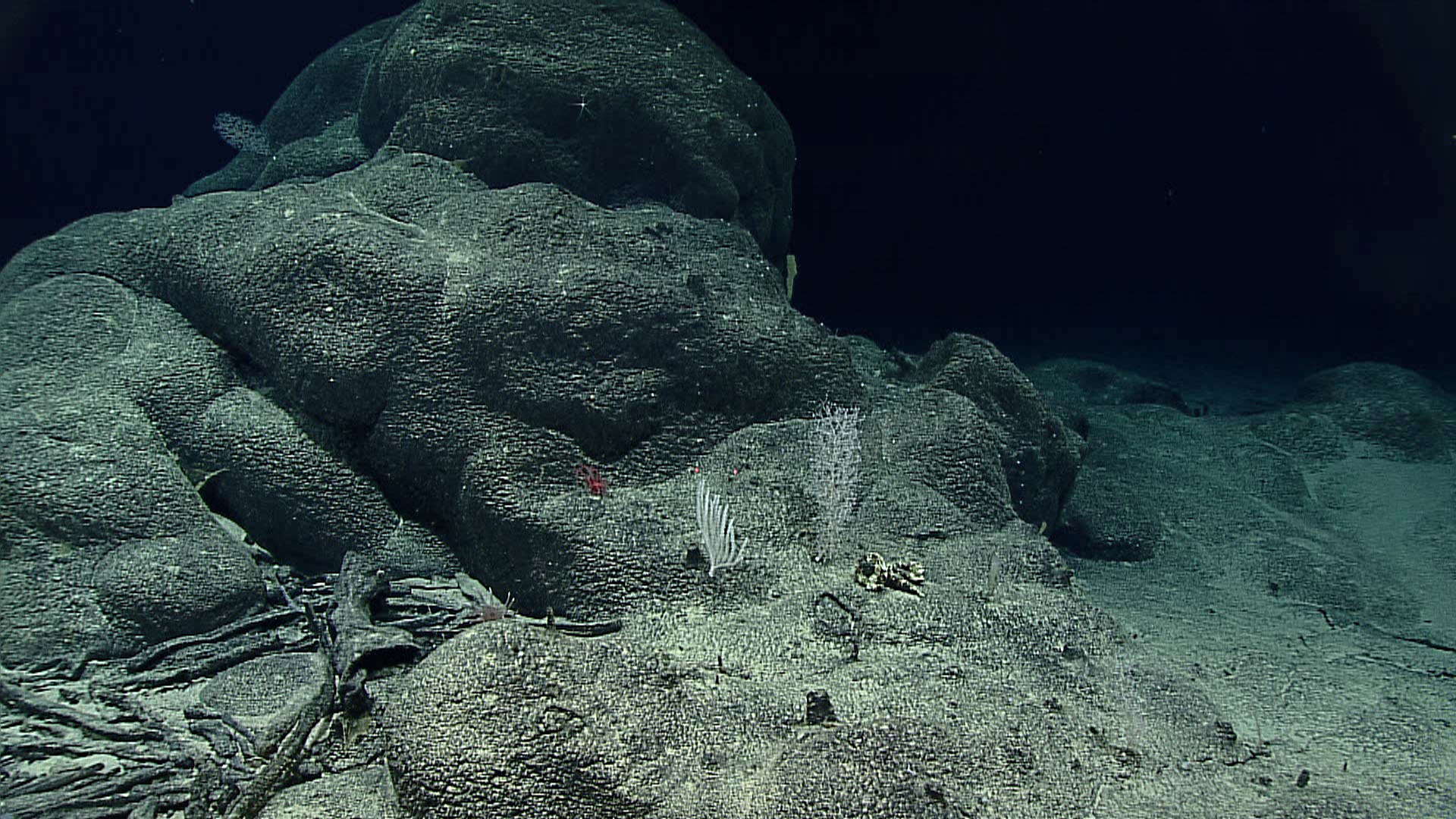Transcript below.
Whalefalls, in case you didn’t know, are kind of the best thing ever. There’s not a ton of food in the deep, so when a whale dies naturally at sea and sinks into the deep ocean, if creates an ecosystem than can last for decades. This massive injection of biomass supports both deep sea scavengers and dead whale specialists, like the majestically named bone-eating snot-flower worm, Osedax mucofloris.
These ecosystems are rare and wonderful and really hard to find. When scientists study whalefalls, often they have to make them themselves. Which does, occasionally, get really, really gross.
But last week, during live ROV-ops, the E/V Nautilus stumbled upon a natural whalefall just absolutely covered in deep-sea creatures on the Davidson Seamount. Octopuses, Cusk Eels, Bone Worms, and many more were just absolutely devouring this dead whale.
Heh. That Octopus is pissed.
Do you want to get paid to go fishing in America’s National Parks? Invasive Brown trout are making a mess in the Colorado River and Grand Canyon National Park wants them out, so they’re creating an incentive program to pay anglers to fish them out.
I guess it wouldn’t be a Weekly Salvage without some 3D printing news. Researchers at Washington State University have developed a toughened PLA using spent coffee waste that’s 400% tougher than standard PLA. And it looks delicious.
It’s also not a perfect Salvage Week without some deep sea mining news. Deep-sea miner DeepGreen announced last week that they had successfully extracted base metals from polymetallic nodules, what we used to call manganese nodules. One of these. At the same time, researchers announced higher than expected biodiversity in the area everyone wants to mine, including some ancient brittle star clades.
A once-thought extinct catfish from North Carolina was spotted in Great Smoky Mountain National Park. The 3 inch Smoky Madtom has venomous spines that deliver an extremely painful sting to waders and is definitely some kind of metaphor.
Space Whales! Space. Whales.
Ok, actually we’re talking about watching whales from space. And it’s not that fun. When a pod of whales strands on remote coastlines, we often don’t know it even happened. This isn’t ideal, since whale stranding tell us a lot about population health and are indicators for what’s going on in the ocean. So knowing where and when whale strandings happen is a pretty big deal.
In Using remote sensing to detect whale strandings in remote areas: The case of sei whales mass mortality in Chilean Patagonia, researchers from Chile and the UK used opportunistic satellite data to validate satellite tracking of whale strandings against aerial animal counts and developed a suite of AI powered tools to detect whale strandings in historic satellite photos. While they were easily able to identify stranded whales by eye in satellite photos, the computer didn’t do so well. However, more whales were counted in the satellite photos than in the original aerial photos, suggesting that with ever improving satellite resolution and coverage, this could be an excellent tool in our efforts to accurately detect whale strandings.
Now if only we could figure out how to validate open ocean satellite images against geoposition so that we could non-invasively track living whales from space.
Alright, fine. You want space whales? I’ll give you space whales.
You asked for it.
This is A Deeper Sea by Alexander Jablokov. It’s the best worst telepathic talking dolphin ocean science fiction ever written. It ends with Sperm Whale Jesus leading an army of cyborg marine mammals to the seas of Jupiter to commune with sentient gas whales and somehow that’s not even a spoiler. Also there’s a bunch of weird soviet espionage and killer whales are total dicks.
It’s not in print anymore, but I’ll throw down some links to where you might find old copies.
And don’t say I didn’t warn you.

